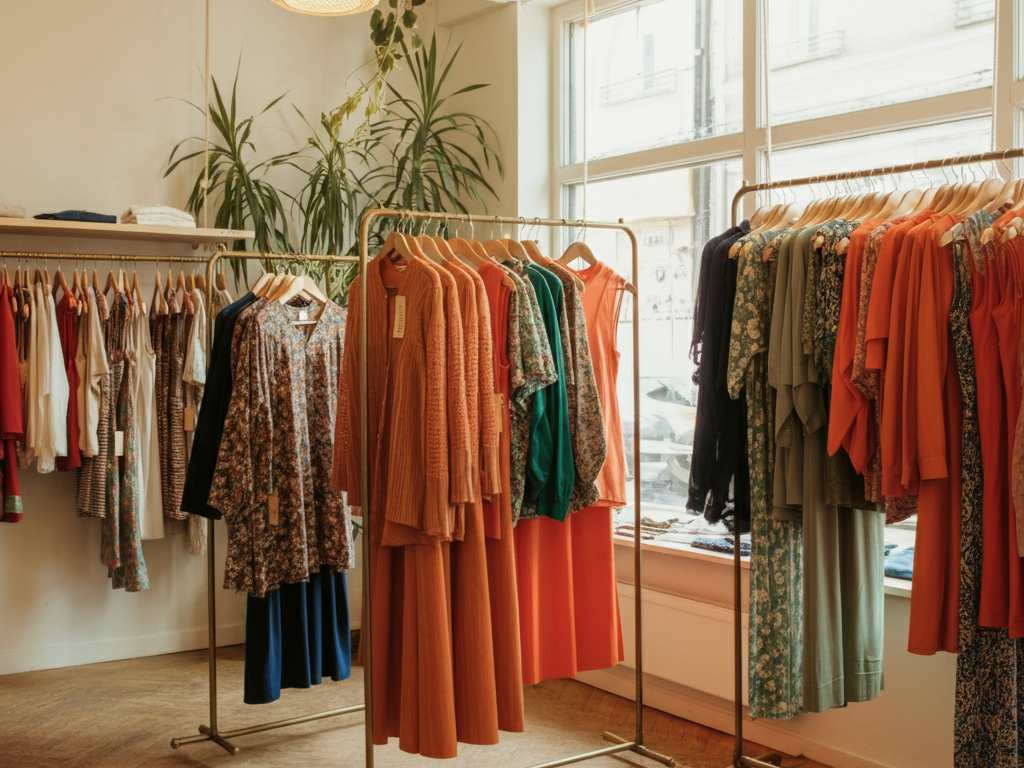Fashion and sustainability are two worlds that often seem at odds. However, Judy’s Fashion Deadstock is bridging that gap by championing eco-friendly practices through deadstock fabric. But what is deadstock fashion, and why does it matter? We’ll explore how Judy’s is revolutionizing the fashion world and why deadstock could be the future of the industry.
What Is Deadstock Fashion?
Deadstock refers to unused fabric or unsold clothing that would otherwise go to waste. These materials often come from overproduced collections, leftover fabric rolls, or canceled orders. Instead of heading to a landfill, deadstock finds new life in the hands of conscious designers.
Judy’s Fashion is a trailblazer in using deadstock materials to create stylish, high-quality pieces. By combining innovation with sustainability, Judy’s has made eco-conscious shopping both accessible and fashionable.
Why Deadstock Matters in Sustainable Fashion
The fashion industry is one of the largest polluters globally, accounting for an estimated 10% of global carbon emissions and producing 92 million tons of waste annually. Deadstock materials offer a way to minimize this impact:
- Reducing Waste
Deadstock avoids the need for new material production and keeps discarded fabric from contributing to landfills.
- Lower Carbon Footprints
By repurposing existing fabrics, deadstock fashion minimizes the need for energy-intensive processes like dyeing and weaving, which are common in traditional fabric production.
- Water Conservation
Fabric production often requires significant amounts of water. By reusing materials, brands like Judy’s Fashion save resources and reduce overall environmental strain.
Deadstock aligns perfectly with the values of sustainable fashion enthusiasts and eco-conscious consumers. It’s a way for the industry to tackle both overproduction and waste without sacrificing style.
Judy’s Fashion Deadstock: Leading the Charge
Founded on the belief that sustainability should drive fashion innovation, Judy’s has become a standout name in the deadstock fashion movement. Here’s a closer look at why Judy’s deserves attention:
- Mission and Values
Judy prioritizes ethical sourcing, focusing on giving a second life to unused materials. Every piece is thoughtfully designed, ensuring timeless style and quality.
- Craftsmanship and Creativity
Deadstock materials vary widely, which challenges designers to be creative. Judy’s pieces often feature unique patterns and limited-run designs, appealing to shoppers who value individuality.
- Commitment to Education
Judy’s doesn’t just sell clothing; they educate their customer base. By sharing the benefits of deadstock and sustainable practices, they empower consumers to make informed decisions.
The Economics of Deadstock
Deadstock fashion isn’t just good for the planet; it makes financial sense, too. Here’s how:
For Businesses
- Lower Material Costs
Purchasing unused fabric or surplus inventory is often cheaper than creating new textiles, freeing up funds for other investments like better craftsmanship or ethical labor practices.
- Appeal to a Niche Market
Growing consumer awareness around sustainability means businesses using deadstock can attract eco-conscious shoppers.
- Smaller, Sellable Collections
Limited quantities of deadstock fabric mean brands create smaller collections. These capsule collections often sell out faster due to their exclusivity.
For Consumers
- Affordable Luxury
Shoppers can often find luxurious, high-quality pieces crafted from deadstock at more affordable prices, as the cost to source materials is lower.
- Feel-Good Purchases
Deadstock allows consumers to contribute to sustainable practices, making them part of a positive movement with every purchase.
How to Shop Responsibly with Deadstock
If you’re new to the concept of deadstock fashion, here are some easy tips for shopping responsibly:
- Look for Deadstock Labels
Support brands like Judy’s Fashion that focus on using repurposed materials.
- Research Sustainability Practices
Not all deadstock is created equal. Ensure the brand is transparent about its sourcing processes.
- Prioritize Timeless Staples
Opt for classic pieces you can wear time and time again. A well-chosen deadstock item can be a staple in a capsule wardrobe.
- Care for Your Clothes
Extend the life of your deadstock garments by washing them with care and storing them properly.
Judy’s online collection of deadstock pieces is a great place to start for anyone looking to add sustainable, stylish options to their wardrobe.
The Future of Deadstock in Fashion
Deadstock is more than a trend — it’s becoming foundational to the future of sustainable fashion. From large-scale brands to independent designers, more players in the fashion industry are committing to reducing waste through deadstock materials.
Key Trends to Watch
- Technology Integration
Advanced AI and machine learning are beginning to play a role in identifying, sourcing, and repurposing deadstock fabric, making the process even more efficient.
- More Collaborations
Expect to see partnerships between deadstock brands and mainstream retailers, bringing sustainable fashion to wider audiences.
- Consumer Awareness
The demand for eco-friendly fashion continues to grow. Deadstock will likely become a go-to option for those looking to make conscious shopping decisions.
By focusing on creativity instead of overproduction, deadstock offers a much-needed change to the narrative of fast fashion.
Making a Statement with Judy’s Fashion Deadstock
Judy’s Fashion Deadstock is proof that style and sustainability can go hand in hand. By investing in garments made from deadstock, you’re supporting an eco-conscious movement that helps protect the planet while staying on-trend.
If you’re intrigued by the possibilities of deadstock, why not explore Judy’s collection today? Join a growing community of individuals who believe in better fashion choices—without compromising quality.
Check out Judy’s Fashion Deadstock now and be part of the sustainable fashion revolution. Every purchase makes a difference!
